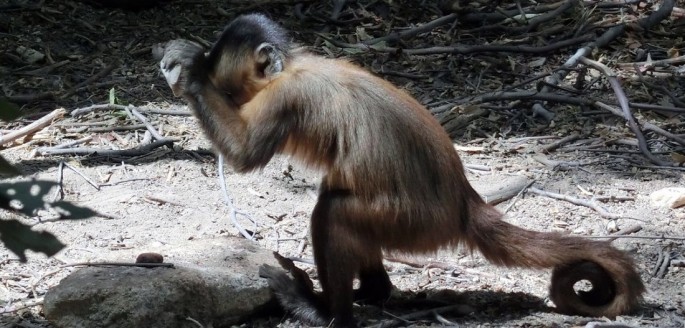When prehistoric humans began using stone tools, this became a milestone in human evolution and intellect however, primates have also acquired this skill by also creating and using tools in the past hundreds of years and maybe, throughout their existence.
Scientists have recently uncovered some stone tools dating back to 700 years in Brazil, where pre-Columbian monkeys used these during the Stone Age.
These monkeys are Brazilian bearded capuchin monkeys that are also known as Sapajus libidinosus, where they are believed to use stones as hammers along with anvils to pound and crush open objects like cashew nuts.
In this new study, researchers of the University of Oxford have discovered 69 stones revealing telltale signs and marks of damage, most likely from pounding cashew nuts, after digging from a site some 70 centimeters deep in Serra da Capivara National Park in northeastern Brazil.
These stone tool hammers are composed of quartzite stones where the anvils are made from sandstones. Since these tools are estimated to be used some 700 years ago, scientists suggest that ancient capuchin monkeys observed prehistoric humans make similar tools, that influenced their primate stone tool use.
According to lead author of the study, Michael Haslam of the School of Archaeology at the University of Oxford, this new evidence strongly suggests that monkeys and other primates out of Africa have also used tools for hundreds of years and quite possibly, for thousands of years.
Haslam also notes that these capuchin monkeys have not tried experimenting with new materials, as they are still using these tools up until now. He adds that the capuchins are prone to use the same materials using the same techniques unlike humans, who have innovated their tool use in the past 2,500 years, towards the Iron Age.
This new study is published in the journal Current Biology.



























